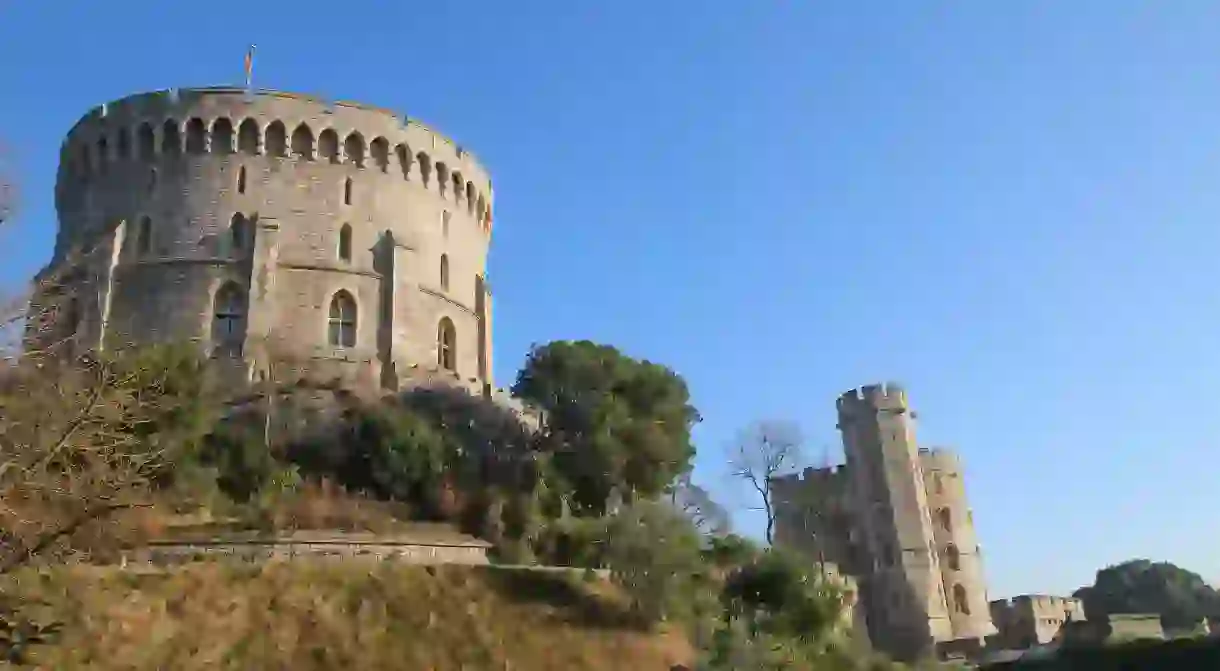10 Things You Didn't Know About Windsor Castle

A favourite weekend home of the Queen of England and soon to play host to a glamorous royal wedding, the striking 11th-century Windsor Castle is a building graced with fascinating history and luxurious design. Said to be the longest-occupied royal residence in all of Europe, the 900-year-old castle has many secrets hidden along its queenly corridors.
Read on for 10 facts you never knew about this world-famous palace.
It’s home to a dolls’ house that belonged to a queen
We’re all aware this castle houses Britain’s beloved monarch for much of the year, and its stunning interiors are hardly a well-kept secret, but did you know this regal building also has a miniature version of a 1920s abode in its midst? Built as a gift for Queen Mary between 1921 and 1924 by the prominent architect Sir Edward Lutyens, this tiny masterpiece has a garden, library and servants’ quarters crafted in exquisite detail.

It’s the largest (occupied) castle in the world
With an incredible 1,000 rooms, Windsor castle has been in continuous occupation for more than 900 years. It was William the Conqueror who chose the site, as it was high above the River Thames and located conveniently beside a Saxon hunting ground. From Henry VII to Queen Victoria, many of England’s best-known monarchs have graced its rooms – 39 in total.

If the Queen’s at home, you’ll know by the flag
If you see the union flag flying, you’re out of luck. It’s the Royal Standard they raise at Windsor (and at every royal residence) to announce the monarch is present. The flag’s design is divided into quarters; two of red with three golden lions walking or ‘passant’ from the French, representing England. One quarter is yellow with a ‘rampant’ lion (standing with his claws up) to represent Scotland. Ireland’s quarter is blue with a golden harp.

The castle played a key role in World War II
Though the British public believed the royals were sleeping at Buckingham Palace during World War II, it was actually at Windsor castle where the young Queen and her family spent their time as the Germans bombed England.
The castle’s famous deer were also moved up to Balmoral to make room for crops to be grown on the land as part of the war effort.

Changing the guard can stop traffic
A top-class addition to your visit to Windsor would be watching the iconic changing of the guard. The stiff-lipped guards in their uniforms of blood red and striking bearskin hats move in immaculate formation during a 45 minute ceremony known formally as Guard Mounting: the official handover of the responsibility of guarding the royals. In Windsor, cars often stop for the spectacular display which takes place at 11am on most days of the month.

It’s home to a royal mausoleum
St. George’s Chapel, soon to house couple-of-the-moment Prince Harry and Meghan Markle as they tie the knot, is also the final resting place of many revered British monarchs. In fact, this annexe of Windsor Castle ranks next to Westminster Abbey as a royal burial spot. Among many of those laid to rest in the chapel are Henry VIII and the only one of his wives to bear a son, Jane Seymour.

It’s home to some priceless art
Windsor Castle is home to part of the largest art collection in the world owned by the British Foyal Family. The Royal Collection, spread out between the 13 royal UK residences includes artworks by Da Vinci, Michelangelo, Hogarth and Vermeer. The walls of the State Apartments at Windsor Castle are heaving with the finest examples of this proud collection. Visit the Reuben’s Room for breathtaking Baroque or The Lantern Lobby for gleaming candelabras and fairy-tale suits of armour.

There’s a story behind one of its famous statues
Though the legend says Richard Westmacott who designed The Copper Horse ended his own life after forgetting to add the stirrups, this is widely believed to be far from the truth. What we do know however, is this triumphant image of King George III pointing from Snow Hill (at the end of The Long Walk path) towards Windsor Castle, was commissioned by his son George IV. The statue bears the line ‘the best of fathers’ written in Latin, sadly off-the-mark as the pair were said to have loathed one another.

A fire almost devoured the castle
In 1992, a fire broke out in the Queen’s private chapel when a curtain caught fire. The blaze, which took place on November 20th, caused extensive damage to certain paintings and an organ, though many of the paintings had been moved by coincidence the previous day. Her Majesty the Queen was alerted to the incident by Prince Andrew. Some £36.5 million worth of damage is believed to have been caused.

It’s where the Royal Family got their name
World War I meant serious tensions between England and Germany. The royals’ Teutonic ties were no longer an asset to the noble family. But where to find a new name? It must be something proud, something regal and, vitally, something English. In 1917, King George IV announced he and his kin – at that time bearing the name of ‘Saxe-Coburg-Gotha’ – would be known henceforth as the Windsors.














